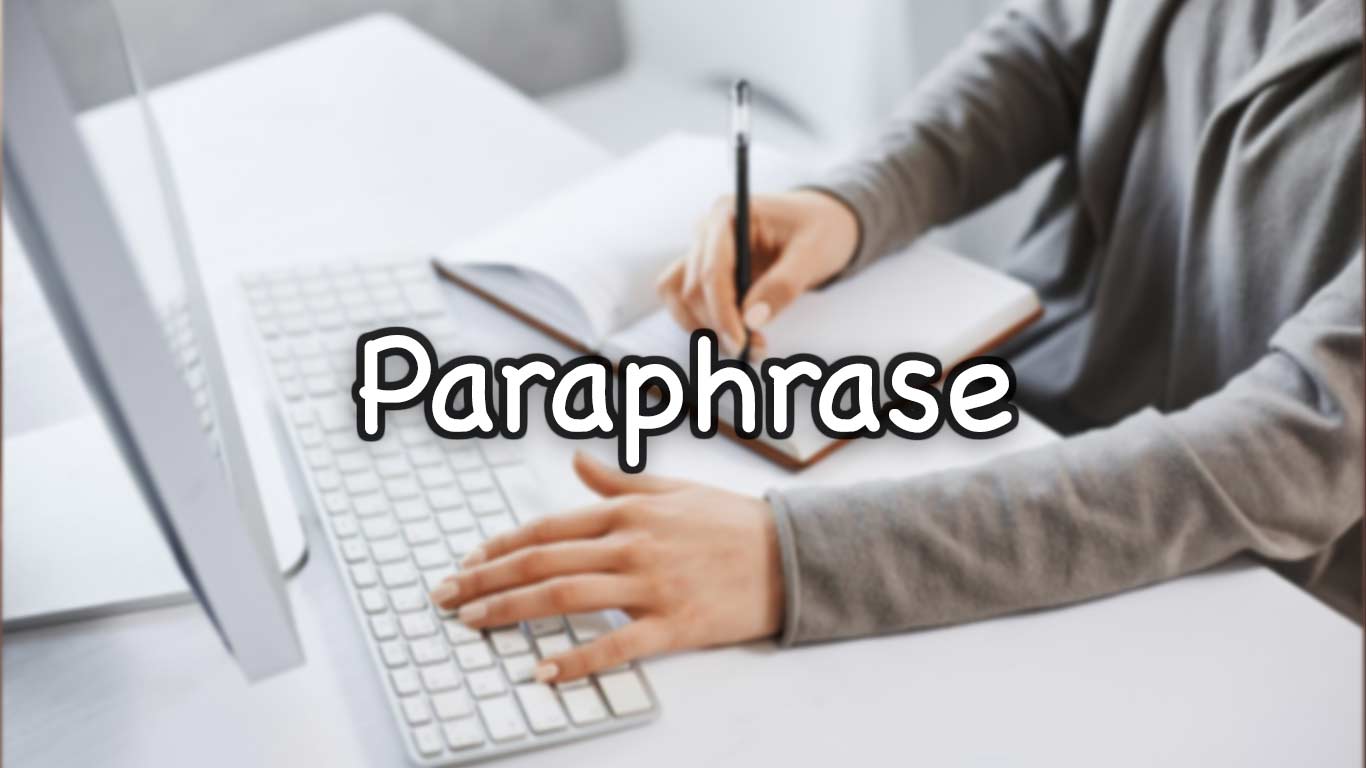How to Paraphrase to avoid Plagiarism

How to Paraphrase
Paraphrasing is a skill to modify a document into your own words by modifying its structure as well as its arrangement. By understanding the quotation, the paraphraser must retain the original concept of the sentence while altering it. Moreover, he should read the sentence, again and again, to avoid skipping the major details.
There are some differences between quoting and paraphrasing. While quoting a sentence we use quotation marks and mention the exact words of the source. But in paraphrasing we do not use quotation marks and also the words are different from the source. Additionally, both have a similarity that source reference should be mentioned.
Avoid plagiarism
Plagiarism means you are duplicating or copying the data without giving credit to the original writer. Mostly, plagiarism is done with someone else’s ideas or work but if it is done with your data, so it is called self-plagiarism. The plagiarized document appears to be your own but in reality, it’s copied from another source. In plagiarism, it seems that you are trying to steal someone else credit. In many fields, it’s against the law, if we copy ideas without mentioning the source. But in writings, it’s unethical to plagiarize.
Paraphrase?
Modifying a sentence or phrase by using your vocabulary without altering the original sense of the sentence is called a paraphrase. It is a legal method to comprehend and address someone else information by referencing properly. Moreover, it is an ethical way to use someone else work by giving credit to the source.
The Amount of the words in paraphrase is mostly alike to the original, while during summarizing a text, the amount of words and length of the sentence gets shorter. A paraphrase must have different vocabulary and terminologies as compared to the source.
How to write a paraphrase
An abundant amount of data is available which shows the strategies for paraphrasing a document. A lot of techniques out there to paraphrase. But if we divide the technique into small steps, so it would be easy to grasp the way to paraphrase a sentence.
- Step#1: Read the sentence carefully.
- Step#2: Read the sentence again and again until you understand its proper meaning.
- Step#3: Note down the key concepts as well as the major terminologies used.
- Step#4: Replace the terminologies with appropriate vocabulary while retaining their original meaning without looking towards the original text.
- Step#5: Modify the structure of the sentence by changing the arrangement. For example, if a sentence is an active voice, you can convert it into passive voice or you can do it with any other technique.
- Step#6: Read it again to avoid skipping any important concept. Also, read the original sentence to make sure that you mentioned all the important details.
Note: Don’t use inappropriate keywords. If you observe that by replacing any word you will lose the original meaning of the sentence so don’t replace that word. Keep it original.
Out of these steps, the most vital one is to read the sentence carefully. The more you will understand the concept of the sentence, the better will be the quality of the paraphrase. Without reading the sentences carefully, there will be a huge chance of plagiarism or losing the prime information.
Key Concept:
It seems easy to replace the words and modifying the structure of the sentence but when we start to write a paraphrase, there are chances to modify the sense of the sentence also. Therefore, it is of utmost importance to keep the original concept of the author in its original form. If you found a long sentence in a paragraph, so try to break it into separate concepts and then compile all of these concepts in a new form by using multiple appropriate terminologies. Sometimes, we can make two or more paraphrased sentences from one original lengthy sentence.
Is it allowed to add additional information while doing paraphrasing?
The answer to this question is that if the additional added information makes the concept or source more clear so we can add. But if it’s creating more ambiguity and giving another dimension to the sentence so we don’t have to do it. Additional information can be on your thoughts or can be from other texts.
Can we replace special terminologies with their synonyms?
If the terminologies used in a sentence are too much specific and it’s hard to find an alternative word so keep the original terminologies. Even if it alters the meaning of the sentence by using another word so don’t use the synonym. But if a synonym retains the original sense of the sentence, so you can use the synonym.
Can we use abbreviations in a paraphrased sentence?
Mostly, authors try to avoid abbreviations. But if you already mentioned the word in previous sentences and added its abbreviation in brackets (), so you can use abbreviation in other sentences. The reason is that abbreviations create ambiguity in the sentence so try to avoid them.
How to add references?
Because in paraphrasing, we are using someone else’s work. Therefore, it is ethical to give credit to the source by mentioning the reference source. We can add a reference when we complete paraphrased sentence. References can be added by various soft wares suchlike Mendeley, EasyBib.com, EndNote, ReadCube Papers, and Zotero. Whereas Endnote is most widely used by writers to add references.
Paraphrasing is an art. It is a skill. It’s just like driving a car. You can only learn by practicing according to the rules, again and again. You cannot get perfection by just reading or learning.
PARAPHRASING (Kumail)